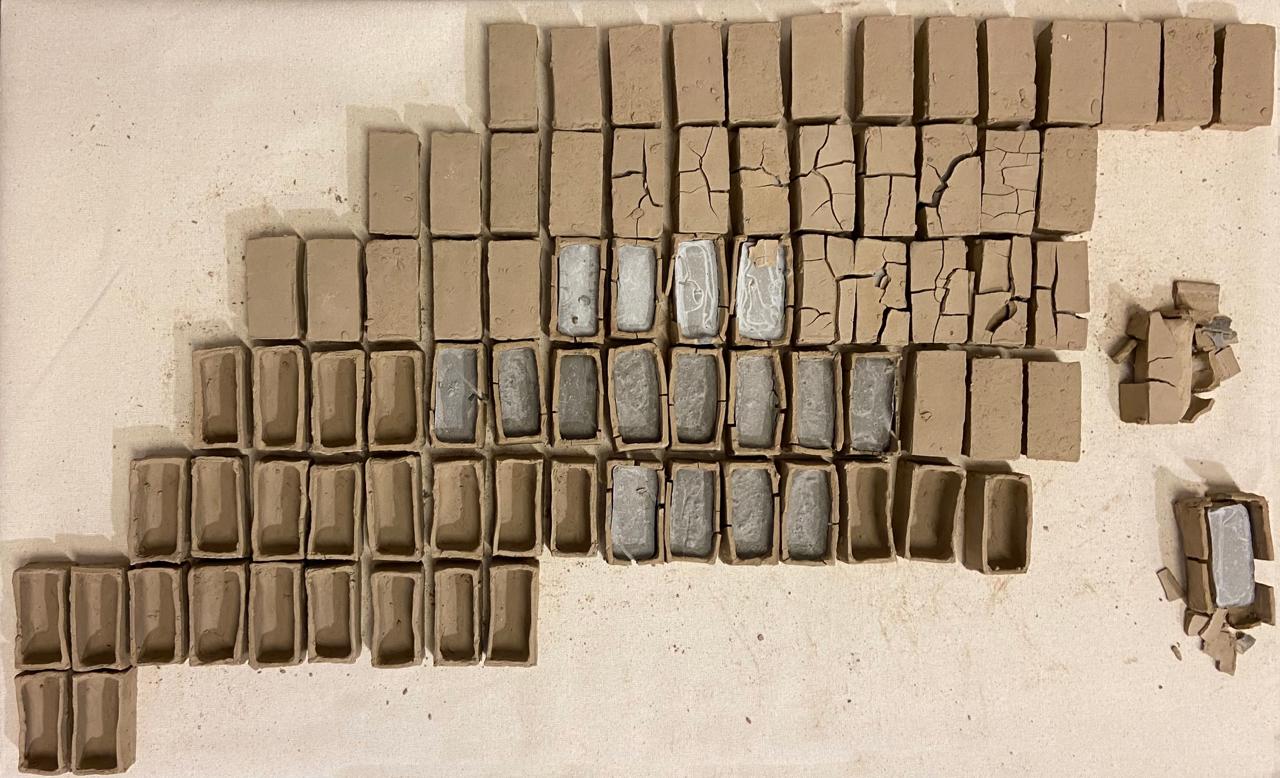The Many Afterlives of Lloyd Barrage
Contributors
100 • Cycles
On 24 October 1923, the Governor of Bombay laid the foundation stone for the eponymous Lloyd Barrage in Sukkur, a Sindhi city, on the west bank of the Indus River. He cast the Barrage’s tale as one in which the colonial administrators’ determination would “convert a desert into a garden, [and] ensure prosperity to those cultivators who live in that demoralizing atmosphere which is produced by an uncertain and scant supply of irrigation water.” 1 Never mind the potential problems of water-logging, salinity, or the fragmentation of habitats for marine life, 2 the fetishization of engineering capability framed the construction as a bringer of productivity and prosperity to the Sindhi people by the British Raj. However, while promoted as aiding the tiller, irrigation schemes that stemmed from Lloyd Barrage primarily aided the landlord, leading farmers to resort to tube wells for watering their rice crops. As George Perkins Marsh noted, as far back as 1874: “the tendency of irrigation as a regular agricultural method is to promote the accumulation of large tracts of land in the hands of single proprietors and consequently to dispossess the small landholders.” 3 It is unsurprising then that for the thousands of Sindhis, Balochis, and Punjabis laborers who worked on the constructing the Barrage, there is also barely a mention.
Twenty-three years later, in 1955, the opening ceremony of Kotri Barrage in a newly independent Pakistan mirrored the inaugural ceremony of Lloyd Barrage both in its implication of “progress” dependent on infrastructural investment and in the ideological space with which it cast the people it claimed to be benefiting. The Pakistani government’s attitude towards Sindhi agriculture was identical to their British predecessors. Both cast the cultivator (known as haris in Sindhi) as a malleable material into which progress could be imprinted. Yet, just as the Barrage physically transformed the landscape, it also erased the history of a people deeply reliant on the natural rhythms of the Indus for their environmentally dynamic form of recessional agriculture.
Foundational to the colonial regime’s presentation of the Lloyd Barrage project was the belief that native Sindhi cultivation was unproductive, especially in comparison to cultivation in the neighboring Punjab province. The cause of Sindhis’s insufficient agricultural output was believed to be the dependence on the unreliable Indus River, which was prone to unpredictable fluctuations, especially in the summer. In addition, the Sindhi cultivator’s belief in kismat was employed to establish a binary contrast between India and the West – one Sindhi official wrote that once a stable water supply was assured, “the traditional indolence and fatalism of the Sindhi cultivator may be sought in vain.” 4 A similar sentiment was publicly articulated in a souvenir booklet that accompanied Lloyd Barrage’s opening ceremony. It stated, “The cultivator has felt that kismet [sic], rather than his systematic exertions, is the ruling factor in his agricultural operations. To put an end to this uncertainty […] it was necessary to devise some means of assuring a level of the water in the river which would permit of more certain and orderly irrigation conditions.” 5
Pakistan’s post-independence governments carried the same rhetoric in discussions concerning improving Sindhi agriculture. The notion that the government possessed the authority to educate haris in the ‘correct’ way of farming surfaced in 1962, when a third barrage, Guddu, became operational. The opening ceremonies of both events demonstrated the resilience of a mindset in which the control of water could take precedence over the customs and traditions of the Sindhi population.
—
Afterword: A ball of clay [ مٹْی ] extracted from a river bed, when thrown onto a potter’s wheel, is centered, opened up, and extruded into a vessel with an embodied force. The force of the hands forms an array of vessels 1.5” by 3”. As a vessel constructed of land and water, it can return, after use, back to the land from which it came. Concrete was poured into a few of these vessels as they were drying. The concrete hardens up and dries more quickly than the clay. When drying these two materials, one cracks as it dries. In the relationship of clay to concrete, does one material survive at the cost of another?

- Daniel Haines, “Concrete ‘Progress’: Irrigation, Development and Modernity in Mid-Twentieth Century Sind,” Modern Asian Studies 45, no. 1 (November 3, 2010): 179–200, ↩︎
- Md. Masud Karim and Navin Bindra, “Cumulative Impact Assessment for Sindh Barrages,” Impact Assessment and Project Appraisal 34, no. 4 (September 29, 2016): 346–58 ↩︎
- Rob Nixon, Slow Violence, and the Environmentalism of the Poor (Cambridge, MA: Harvard University Press, 2013). ↩︎
- Daniel Haines, “Concrete ‘Progress’: Irrigation, Development and Modernity in Mid-Twentieth Century Sind,” Modern Asian Studies 45, no. 1 (November 3, 2010): 179–200 ↩︎
- Opening of the Lloyd Barrage, p. 1. ↩︎